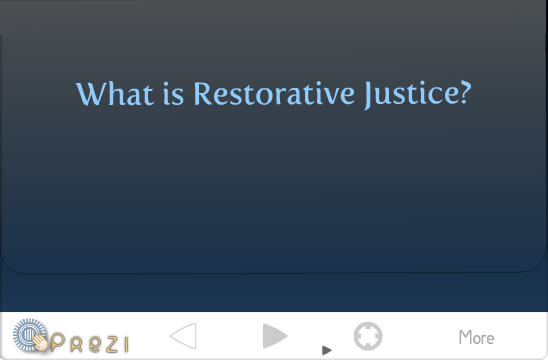Restorative Justice: theoretical foundations addresses a wide range of fundamental questions about restorative justice, considering amongst other things ways in which conceptual pitfalls can be avoided, and how traditional models of peacemaking and healing developed in traditional societies can be integrated into the justice systems of late modern societies. Overall it provides an authoritative overview of contemporary thinking about restorative justice and will be essential reading for anybody concerned with the future direction of criminal justice and criminal justice systems.
Content: Introduction 1) D.W. Van Ness “The shape of things to come: a framework for thinking about a restorative justice system”; 2) H. Zehr, “Journey to belonging”; 3) C. Cunneen, “Restorative Justice and the politics of decolonization”; 4) M. Wright and G. Masters, “Justified Criticism, Misunderstanding, or Important Steps on the Road to Acceptance?”; 5) L. Walgrave, “From community to dominion: in search of social values for restorative justice”; 6) G. Pavlich, “Deconstructing restoration: the promise of restorative justice”; 7) P. McCold and T. Wachtel, “Restorative justice theory validation”; 8) G. Bazemore and C. McLeod, “Restorative Justice and the future of diversion and informal social control”; 9) M. Schiff and G. Bazemore, “Restorative justice for children: in need of procedural safeguards and standards”; 10) C. Eliaerts and E. Dumortier, “Restorative Justice for Children: in need of procedural safeguards and standards”; 11) G. Mannozzi, “From the 'Sword' to Dialogue: towards a 'dialectic' basis for penal mediation”; 12) R. MacKay, “Punishment, Guilt and Spirit in Restorative Justice: an essay in legal and religious anthropology”; 13) G. Maxwell and A. Morris, “The role of shame, guilt and remorse in restorative justice processes for young people”; 14) T. Winfree, “Peacemaking and community harmony: lessons (and admonitions) from the Navajo peacemaking courts”; 15) E.A. Fattah, “From philosophical abstraction to restorative action from senseless retribution just deserts and restorative justice revisited”; 16) E.G.M. Weitekamp, “Restorative justice: where we are and where might we go?”.
Source: Vanspauwen, K., Robert, L., Aertsen, I., Parmentier, S. (2003), Restorative Justice and Restorative Detention. A selected and annotated bibliography. Katholieke Universiteit Leuven, Faculteit Rechtsgeleerdheid, Onderzoeksgroep Penologie en Victimologie.








No comments